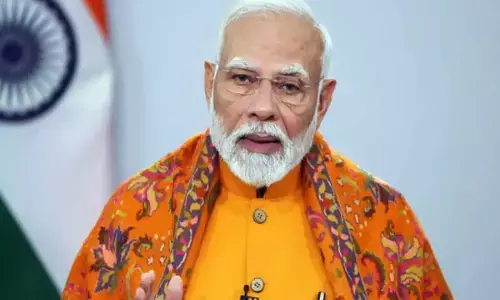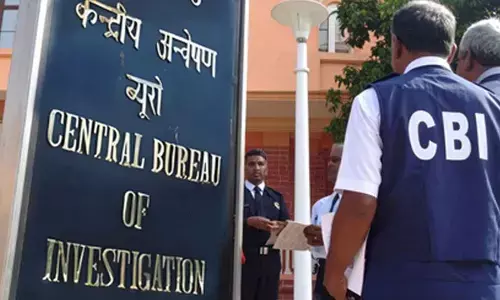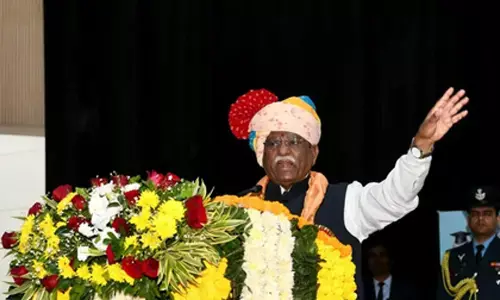How Internet of Things will benefit people

Speaking to TechGig.com, Kaul said that to enable IoT, players in the entire ecosystem, including technology providers, system integrators, service providers, app developers and vertical experts have to work together.
IoT industry will potentially be worth $500-600 billion in the next 3-5 years, says Sanjay Kaul of Cisco
Everyone in the tech space is set to benefit from Internet of Things (IoT), says Sanjay Kaul, Managing Director, Service Provider Business, Cisco India & SAARC.
Speaking to TechGig.com, Kaul said that to enable IoT, players in the entire ecosystem, including technology providers, system integrators, service providers, app developers and vertical experts have to work together.
Excerpts from the interview:
IoT still seems to be at a take off stage in India. What are the roadblocks?
There are hurdles for sure. Today if you look at communications business, it is predominantly mobile and will remain mobile. Although there will be more devices that will offer connectivity, but 70 per cent of it will still be mobile. And for the mobile to function and carry enormous amount of data, they need spectrum. There is licenced spectrum as well as unlicenced spectrum. I think one opportunity the government has to leverage is all unlicenced spectrum and challenge players like us and operators to develop technology that work on that piece of spectrum.
In addition, if I look at the growth of data, in the last three quarters, we have seen an exponential growth. If I take a curve to about 10 years ahead, we need 10 times more spectrum. So spectrum will always be a niche. So these are the two roadblocks according to me, but as we move, technology is evolving. Today, we have technologies that help conserve the spectrum. Such technologies also help in optimising the Capex and Opex.
How do you see data analytics playing a role in the entire scheme of things?
According to global estimates that we have done, data analytics is a $19 trillion opportunity. If I focus on India, it is roughly $600 billion opportunity. And how do we get this one realised is a challenge. A lot of data is happening now, and it is happening at the edge of the network. Data has a value for certain time. For example, if someone is walking down a street at 9 pm and there is data that suggests that he likes Thai food, a Thai food restaurant in his location can reach out to him with a list of discount offers if any and invite him.
This is how data can be put to use to actually increase business. This is where the value is generated. Data analytics is happening and it will move as we move into the next decade. But I can assure that there is enough investment being done in this direction, which will only grow from here.
Another piece of it is cloud. Although cloud has matured to an extent, there are inhibitions about people getting on the cloud and companies getting on the cloud. So is this also not a hindrance in the growth of digitization?
I believe we should do it in steps. I mean, putting everything in cloud is not the solution. My recommendation is to start with a consumer and then move towards core functions. However, it will not happen overnight, and it is not a right thing to do that, because you need to be in control of what you are doing, as you have to take care of the security elements and have to make sure that you can support it 100 per cent. What the cloud does is it helps you reduce the cost. It also helps you modernise your network swiftly. I can tell you, in traditional days we would do one software release a year.
Now if you are on a cloud, if your network functions in the cloud, a new software release can be done as soon as the software is created, which means a daily, weekly or monthly release. It also means that your network is always up-to-date. Hence you can serve your consumers better. So cloud has advantages, but my recommendation is to do it step by step. I don’t see any operator not agreeing to that strategy.
Where do developers find space in IoT domain?
I think to enable IoT, players in the entire ecosystem, including technology providers like us, system integrators, service providers, app developers and vertical experts have to work together. Even infrastructure companies have to be a part of the ecosystem. And when you have to think of projects like ‘smart cities’ and Digital India, where IoT plays a crucial role, each of these players has to come together and work in tandem to make it happen. So, everyone in the tech space will benefit from IoT.
Where do you see IoT going five years down the line?
I think there will be roughly a billion mobile connections but there will be roughly 3-4 billion machine-to-machine connections in a timeframe of five years. So the opportunity is huge. I think IoT will potentially be worth around $500-600 billion in the next 3-5 years. We see it as a massive opportunity. Right now, I think we are in the mobilisation phase. I would say 2017-18 would be execution phase and 2019 would see solid revenues pouring in IoT.
Diksha Gupta, TechGig.com













